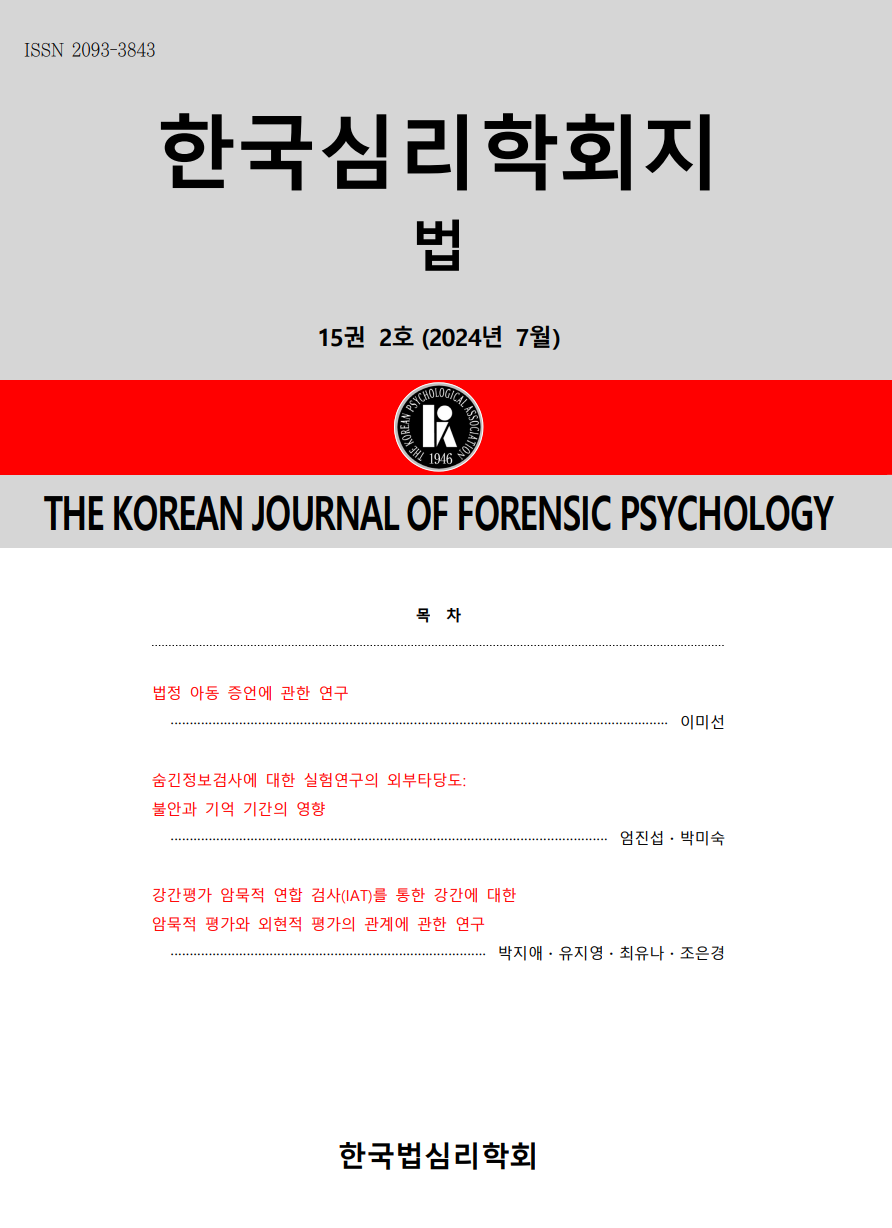 ISSN : 2093-3843
ISSN : 2093-3843
This study aimed to verify the utility of polygraph testing using an information-gain analysis, the Bayesian approach by Wells and Olson (2002). Polygraph test results and prosecution disposition results in Korea for the period 2018-2020 were analyzed. Thereafter, we applied Vrij’s (2008) data to examine the relative usefulness of polygraph testing as compared to unassisted lay- and professional persons. After analyzing a total of 574 cases, it was confirmed that deceptive outcome of polygraph testing increases the posterior probability of being guilty. Moreover, polygraph testing provides significantly more information gain than lay- and professional persons’ decisions over the entire range of prior probability. Especially, the deceptive outcome of a polygraph(0.27) is approximately 3 times more informative than a layperson’s(0.08) decision decision that a person is a liar at the prior probability of 0.32. These research results confirm that polygraph testing is relatively more useful than the judgment of laypersons and experts in the investigative domains. The study findings may help increase the reliability of the investigation using polygraph testing.
This study examined the influence of psychological distance, based on the concept proposed by Trope and Liberman (2010), on crime-related decision-making and risk perception. The research findings yielded statistically significant results in scenarios involving spatial distance. In conditions of psychologically distant condition, compared to closer spatial distance, there was a higher sufficiency of information for judgment, the ability to make judgments based on the provided information, and a tendency to strengthen sentencing criteria. Thus, this study empirically demonstrated that individuals’ decision-making could vary depending on how crime-related information is presented in scenarios involving spatial distance. Furthermore, psychologically closer spatial information constituted a higher level of risk perception, whereas psychologically distant spatial information constituted a lower level of risk perception. Specifically, it was found that men, compared to women, perceived a higher likelihood of crime occurrence and greater seriousness to the resulting harm. This finding contradicts the results of previous studies that reported women to be more fearful of crime victimization compared to men. These research results suggest that the psychological proximity individuals feel towards crime events may have a greater influence than demographic information such as gender, which has frequently been considered a significant predictor in traditional research on fear of crime and risk perception. Through this study, it was demonstrated that the level of individuals’ psychological distance towards crime phenomena has the potential to more accurately measure risk perception regarding crime events. This highlights the importance of considering psychological proximity when assessing individuals’ perception of risk associated with crime.
The present studies examined the nationality-stereotypic crime of in the South Korea context and whether congruency between the defendant’s nationality and stereotypic crime type would effect the judgment of legal decisions. Based on the pilot study which identified nationality-stereotypic crimes, the main study examined the effect of the defendant’s nationality on legal decisions in the crimes of assault, voice phishing, and drug trafficking cases. Total of 504 participants between their 20s to 50s were recruited and the study was conducted through online survey. This study employed a 3(defendant’s nationality: South Korea, China, the United States) single factor between-subjects design in each crime types. Results demonstrated that there were no significant results between defendant’s nationality in voice phishing and drug traifficking cases. Furhtermore, inconsistent with expectations, participants provided more guilty verdicts and higher guilty probability towards Chinese defendant than Korean and American in the assault case. Implications of the findings, limitations and future directions were discussed.